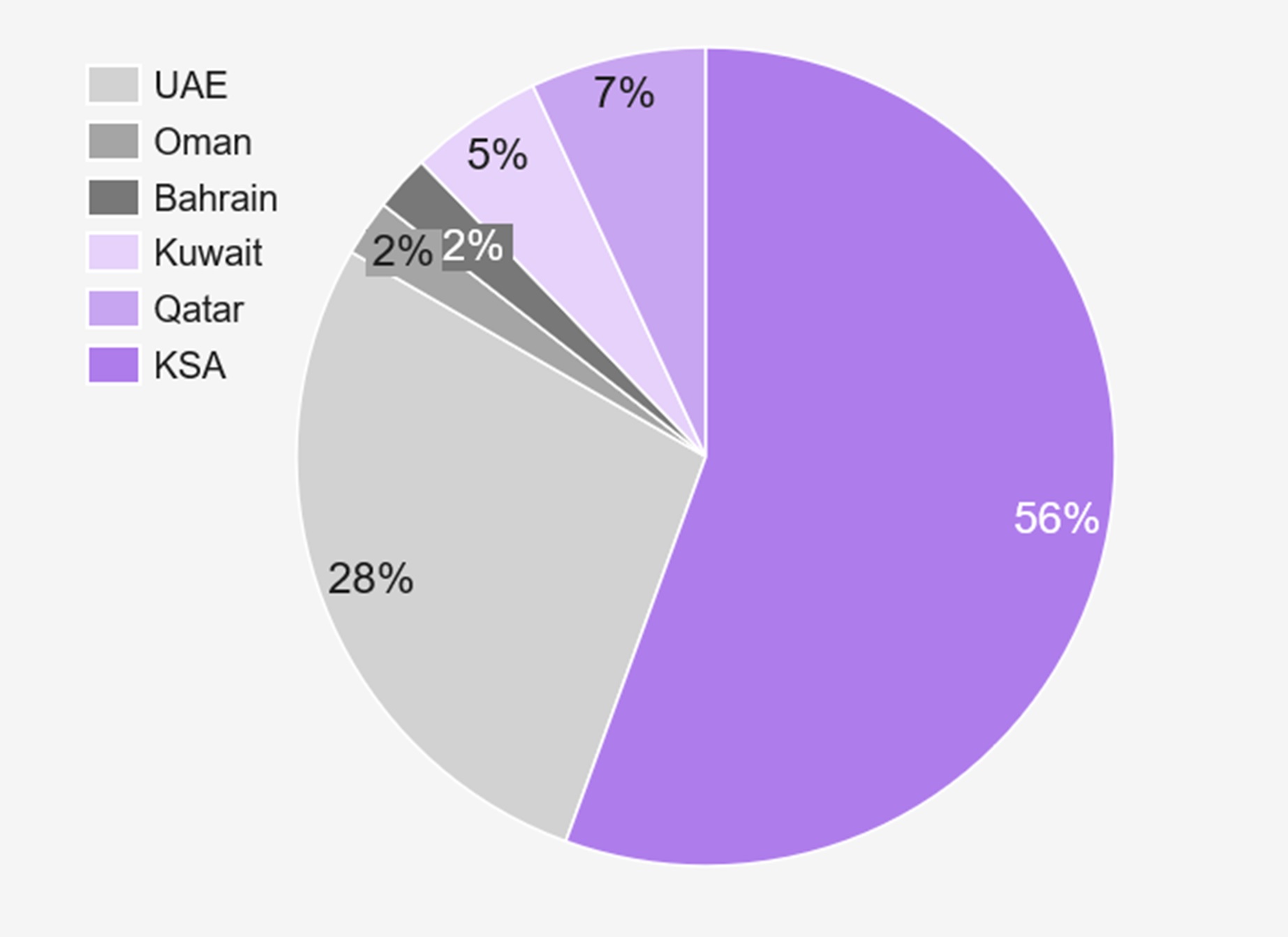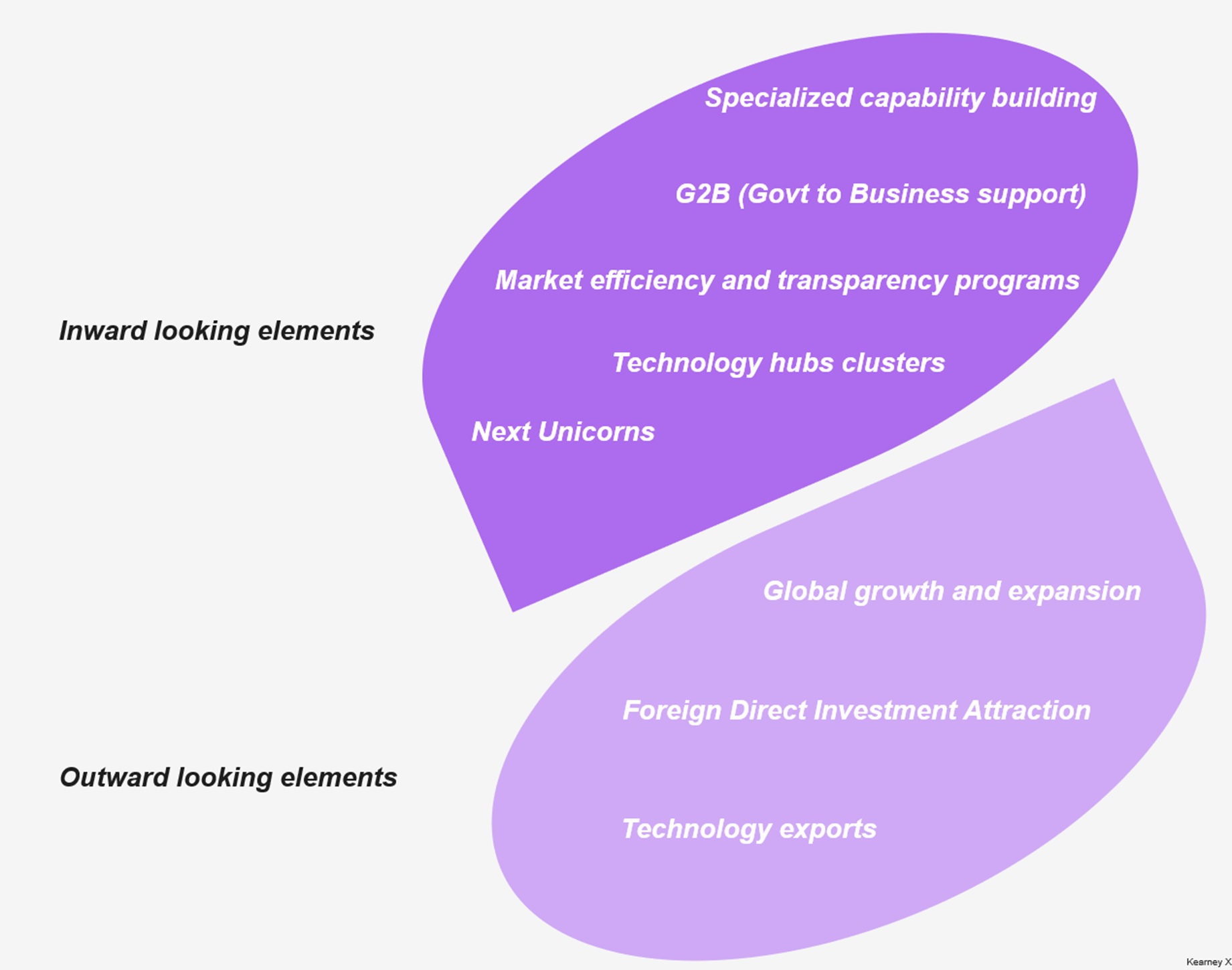Industry Thought Leadership
Saudi Arabia: Success Factors and Advancements Towards Becoming the Leading Regional Technology Hub
November, 2022Kearney has been the advisor of choice for leading government entities in the GCC region, driving the strategic and digital agenda of nations, in close collaboration with their leadership. GCC's thriving and resilient technology sector offers tremendous insights for other countries of the SA-ME-NA region in adopting action-driven digital policies and investments.
Overall, driven by national ICT visions, the GCC countries are undergoing large-scale technological transformation. The Kingdom of Saudi Arabia is the GCC region’s largest economy and is an engine propelling significant growth of the MENA Tech Market. As a result, the Information Technology (IT) and Emerging Technology (ET) markets across the GCC region is growing at a rapid pace.
IT and ET is classified across six key segments – Hardware, Software, IT Services, Cloud and Data centers and Emerging Tech as Core while Digital Platforms as Narrow Current IT and ET sector market size for GCC countries stands at around 45 Bn USD and it forecasted to grow at ~10% CAGR (vs 7% Global CAGR), reaching 100 Bn USD by 2030. This rapid growth is attributed to emergence of data center and cloud businesses, increasing trend of platform business models and higher adoption of emerging technologies such as AI and IoT.

Figure 1: GCC IT and ET Market Size 2021 and 2030 Forecast, USD Bn
Saudi Arabia is one of the leading IT and ET market among GCC countries. In the case of Saudi Arabia, four main factors have significantly influenced and pragmatically driven digital transformation and growth in the market. These include: government focus on economic diversification, national push towards digital transformation, Increasing adoption of emerging technologies and ease-of-doing business for the private sector.
- Government focus to boost non-oil economy: Vision 2030 has been defined with key focus on boosting non-oil economy. The aim is to reinforce and diversify the capabilities of the economy, turning KSA’s key strengths into enabling tools for a fully diversified economy. Technology is one of the sectors which contributes majorly to growth of oil and non-oil sectors.
- National push towards Digital Transformation: Digital transformation has been accelerating across government and private sector in the Kingdom. This continued post Covid, fueled by “work-from-home” trend from citizens / residents and online service delivery and digital business models. KSA government successfully unlocked the opportunity by building applications such as Tawakkalna which clocked 15M+ downloads, and peaked post Covid. Apart from the user facing digital transformations, all the public sector entities are transforming internally as well, adopting digital solutions and moving away from paper-based operations with use of modern ERP and alike systems.
- Increasing adoption of emerging technologies: Several solutions in the Kingdom are increasingly applying sophisticated technologies such as Big data and AI. In addition, mega projects such as the Red Sea project and NEOM have spurred the demand for emerging technologies such as Robotics, 3D printing, IoT and blockchain in the kingdom. As these projects are being developed, emerging technology will continue to grow in the Kingdom.
- Thriving private sector and enhanced ease of doing business and regulations: With recent jump of 30 places in Ease of Doing Business ranking, there are a high number of new businesses and companies registering and operating from within the Kingdom. It is estimated that 1,600+ companies operate in the IT and ET sector alone, with market growth sentiment being at all-time highs. Ministries and Regulatory entities such as the Ministry of Communications and Information Technology and Communication, Space and Technology Commission have been supporting the tech companies’ growth in the private sector as well through dedicated initiatives and programs – ranging from grants, investment and funding support to capability development.

Figure 2: % share of IT and ET market by GCC countries, 2021
Success achieved in Saudi Arabia offer tremendous insights into how other countries within the SA-ME-NA region and policymakers can plan key strategic actions to realize the full potential of the IT and ET market, considering governments play a key role in enabling and supporting vital growth of various sectors now increasingly driven by digital technologies.
In the leading digital nations, including Saudi Arabia, Kearney observes nations have taken an active role across a range of programs and initiatives to support the technology sector. In doing so, they have materialized a thriving national technology market. We attribute such growth to two main set of internal and external elements:

1. Inward looking elements:
- Specialized capability building: Identifying key tech segments in a country and supporting national tech champions to excel in those segments. E.g., Malaysia’s leadership in semiconductor manufacturing
G2B (Govt to Business programs): Government can provide several areas of support to tech businesses, ranging from funding to talent development. E.g., Start-up India initiative provides seed funding, start-up awards and curated mentorship to tech companies - Market efficiency and transparency programs: Government entities, especially regulators can launch dedicated initiatives to promote fair competition. In addition, also providing insights across the market segments such as market size, growth projections and so on. E.g., CST in KSA conducts an annual comprehensive IT and ET sector market study to enhance market efficiency and transparency
Technology hubs and clusters: Setting up dedicated hubs and clusters of technology benefits the tech companies by providing them end-to-end solution for the segment and ecosystem around their business. E.g., King Abdullah University of Science and Technology (KAUST) is developing a broader ecosystem for technology start-ups, SMEs and large enterprises. In addition, national initiatives are underway to position Saudi as one of the leading global tech hubs - Next Unicorns: Tech sector is the leading contributor to the # of unicorns (defined as privately held startup company with a value of over $1 billion) in a country. Enabling start-ups through accelerators and VC funding access boosts the # of unicorns. E.g., Indonesia added 7 new unicorns after pandemic to their existing tally of 3
2. Outward looking elements
- Global growth and expansion: With scalable technology sector offers, governments can push companies to expand their operations abroad – through opening up branch offices and / or setting up talent hubs in other countries.
FDI attraction: Health of the technology sector is also determined by the investment it generates. Leading countries generate high volume of funds inflow in its technology sector - Technology exports: Once the technology sector is mature in a country, it is a logical step to share those capabilities with other countries. Nations can develop a technology export strategy by matching highly mature domestic segments (supply) with attractive international markets (demand) for those services.
To continue the boom of the tech sector and to realize its growth potential in SA-ME-NA region, governments must continue their journey towards maturity following global best practices. Governments will also need to continue reforming and investing in their technology sector, through favorable policies, active stimulus in the market and enabling local players through Digital Transformations of Government entities.

